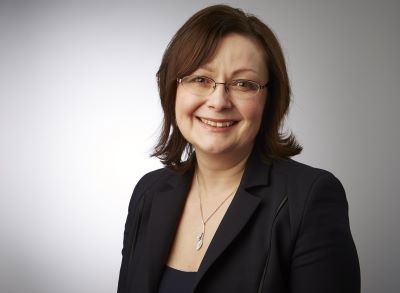Technological advances powered by artificial intelligence (AI) are creating opportunities for manufacturers to minimise waste and accelerate industrial circularity. These fast-evolving technologies bring with them an opportunity to take greater control over waste streams, so manufacturers can assess where there might be scope to reduce, reuse or recycle.
The general shift towards circularity is largely driven by consumer concerns over the environmental impact of industrial waste. Many manufacturers have ESG goals in place and report on progress made to minimise waste and reduce their carbon footprint.
Other factors are driving growing interest in circularity too. The rising cost of virgin materials has encouraged many process manufacturers to explore ways to minimise or eliminate waste, through increased focus on recycling. They also recognise that there are likely to be cost savings and this could deliver a competitive advantage.
Shifting regulation is also driving change. In Europe, member states are required to prepare for the reuse and recycling of 55 per cent of municipal waste, by weight, by 2025, in compliance with the EU’s Waste Framework Directive. European textile production could also face stricter rules following a proposed amendment to the Directive announced in 2023, which would increase manufacturers’ accountability for the entire lifecycle of textile products.
For circularity to be adopted more widely, manufacturers must overcome certain barriers. The quality of recycled feedstock often fails to match their virgin counterparts. In the clothing industry, for example, it is difficult to remove dyes, soaps and other contaminants from recycled materials, which leads to a lower grade feedstock. Secondly, the availability of recycled starting materials can be limited due to insufficiently developed recycling infrastructure. This situation can lead to two main issues: first, potential feedstock may end up in landfill, resulting in a shortage of these materials. Second, recycling plants may face capacity constraints, preventing them from processing materials quickly and in large enough quantities to meet the demand for recycled feedstock. This can lead to the use of ‘blended materials’ that aren’t as sustainable as hoped. Finally, the high cost of recycled starting materials can make them more costly than virgin materials. As such, the manufacturer may be faced with the unpalatable choice of absorbing these costs or passing them on to consumers, who may be unable or unwilling to pay more for an end product simply because it is made from recycled materials.
AI systems have already had a significant impact on the recycling and waste management industries. Computer vision – a faction of AI that generates information through visual media – is widely used to sort materials for recycling. It is also employed for monitoring the condition of recycled goods, ensuring that only those of suitable quality are processed further. Beyond this, AI has found application in product lifecycle management. This has brought particular value to the automotive industry, for example, where data about the performance and recyclability of individual components can be used to inform the owner when maintenance and repair is required, or when a specific component, such as an EV battery, has reached the end of its life. Data gathered in this way can inform the design and development of new products to further optimise circularity. The predictive capabilities of AI can also be used to forecast demand and reduce overproduction.
Among the technologies developed to accelerate industrial circularity through the use of AI is a patent (US11535122B2) owned by software analytics company, BatteryCheck. This AI system uses machine learning to manage and optimise battery cells. Data about the performance, condition and capacity of each battery cell, such as its date of production and cell voltage, is analysed by AI algorithms and/or other variations of AI, to predict when it will need to be recycled or replaced.
X Development LLC, a Google-owned company, has submitted a patent application (AU2021348146A1) for an end-to-end platform developed to manage waste streams that contain chemicals. Focused on optimising recycling processes, the system can identify chemicals present by consulting a library of data including spectrum information, physical properties, computational algorithms and machine learning. Once the chemicals have been characterised, the system is able to determine potential target products that could be produced from the feedstock and generate chemical reaction schemas to enable this conversion.
Another patent (US10710119B2), owned by Sortera Technologies LLC, outlines an advanced material sorting system that uses machine learning to separate materials on a conveyor belt. Vision recognition and X-ray fluorescence systems are used to categorise different materials, based on properties such as particle radiation and colour. The system has introduced a way of sorting materials that are difficult to separate, such as metal alloys.
The advancement of AI promises to enhance everything from simple sorting processes through to the most complex, automated industrial processes, on the way to industrial circularity. Where products are tagged with unique identifiers, computer vision can be used to assess material constituents automatically to determine their suitability for reuse or recycling.
When it comes to developing AI-powered technologies, innovators need to be aware of the relevant patent complexities. Different patent offices have different requirements for technical subject matter, such as software algorithms and mathematical methods, which can make securing commercial protection more challenging. Intellectual property (IP) strategies should be considered carefully to avoid a situation where an innovation is inadvertently disclosed without commercial protection.
The route to industrial circularity is rooted in fast-developing AI and machine learning knowhow. Innovators will need to be fully informed of their IP options if they want to play a part in developing sustainable end-to-end processes in the future.

Dr Joanna Thurston, a partner and patent attorney at Withers & Rogers.











Water Sector Talent Exodus Could Cripple The Sector
One possible reform to the Asset Management Plan (AMP) system would be to stagger the five year cycle across the ten or so water businesses, so that...